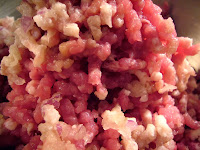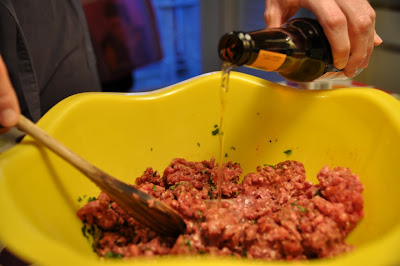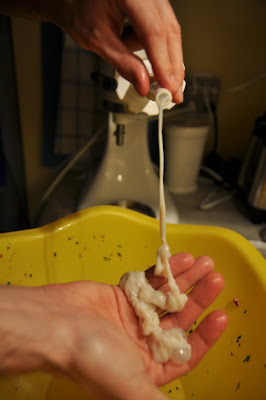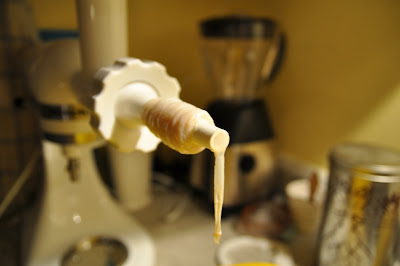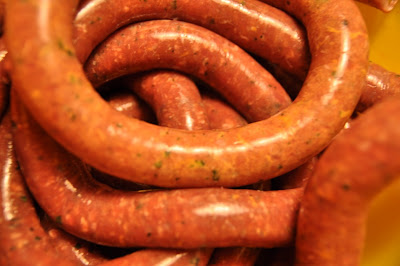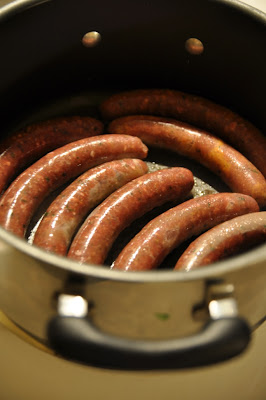It's been a busy time over here at the North American headquarters of Brothers in Sausage, which admittedly only somewhat explains the lack of updates on the blog. Another reason is that I seemingly developed the misconception that sausages are more complicated to make than they really are—and therefore just made a lot of risotto or things like that instead.
But no more of this. Sausages are easy, delicious, and second only to spinach when it comes to building brute strength, and I'm back on the wagon.
To start things off, I thought I would make some medisterpølse, a traditional Danish sausage that is often eaten around Christmas in a special holiday-spiced variation. The word appears for the first time in a cookbook from the 1500s, and is a compound of "met" (pork) and "ister" (suet, which is the fat around the loins and kidneys). So, a sausage made from pork and intestinal fat—what could be more Danish?
Most modern recipes call for pork shoulder and simple, unspecific fat, which is also what my butcher was able to provide (along with the intestine, of course):
I found a recipe by the Danish television chef James Price online, which called for the following ingredients:
1 kg pork
200 g fat
2 onions
1 tsp ground cloves
1 tsp ground nutmeg
2 tsp allspice
salt
pepper
2 egg whites
3 tbsp flour
3-4 dl soup
2 m pork intestine
I gound the meat and fat twice, along with the onions. This is what it looked like after the first and second grinding:
I then added the spices, egg whites, and flour. I cheated by using some chicken soup from the freezer, which I made a few weeks ago. Mix until soft but also a bit firm. Don't use too much soup.
Just for kicks, here's a picture of my KitchenAid getting ready to be loaded up with intestine:
One peculiarity of medisterpølse is that you don't make individual sausage links, but simply just stuff and cook one long sausage. Like this:
Another unusual thing is that you blanch it slightly before frying, so I covered it in water and brought it to the point just before boiling for just under 10 minutes. If it boils, the intestine's integrity can be compromised, and it might break when frying. It should look like this:
I then fried it for maybe ten minutes, until brown:
Medisterpølse is traditionally eaten with any number of things, but usually some combination of potatoes and cabbage or beets, along with plenty of mustard. I stewed some red cabbage in butter, balsamic vinegar, red wine, and star anise, and added salt and pepper along with some maple syrup to sweeten it a little, and served with mashed potatoes:
It was delicious, and Melissa (who is absolutely grossed out by the whole process) even declared it the best sausage she had ever had. That's a recommendation, folks!
Anyway, thanks for reading, and hopefully my sausage-phobia will have been cured enough that another blog post is not too far in the future.
Merry Christmas!














